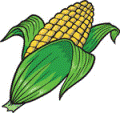Agricultural Research Division of IANR

Haskell Agricultural Laboratory (Northeast Research and Extension Center)
Date of this Version
9-22-2021
Citation
Journal of Economic Entomology, 114(6), 2021, 2571–2580 https://doi.org/10.1093/jee/toab197
Abstract
Injury by herbivores is a major biotic stress that limits soybean [Glycine max (L.) Merrill] crop production. Among the main soybean insect pests, Anticarsia gemmatalis Hübner is responsible for causing significant economic damage in soybean. The primary management strategy for this insect is chemical control and use of Bt transgenic soybean. Alternative strategies, such as host plant resistance, are considered an efficient and less-aggressive method, especially in association with other strategies as part of an integrated pest management (IPM) approach. In this study, we evaluated 30 soybean genotypes to verify antixenosis expression through oviposition, attractiveness, and food consumption tests. From this, we selected 13 promising genotypes to verify the possible presence of antibiosis. Our results suggest that antixenosis was found in genotypes ‘TMG 133’ RR, ‘TMG 1179’ RR, ‘IAC 19’, ‘IAC 17’, ‘IAC 100’, D75-10169, and IAC 78-2318. By influence on behavior and negative impact on larval viability, antixenosis and antibiosis were indicated for the genotypes IAC 74-2832, ‘IAC 19’, ‘IAC 17’, ‘IAC 100’, and PI 274454. ‘TMG 7062’ IPRO was found to provide antibiosis resistance by negatively affecting larval development and viability. Because of reduced food consumption by larvae, antixenosis was indicated for ‘IAC 24’. These genotypes should be considered in soybean breeding programs focusing on soybean resistance to A. gemmatalis.


Comments
Open access.